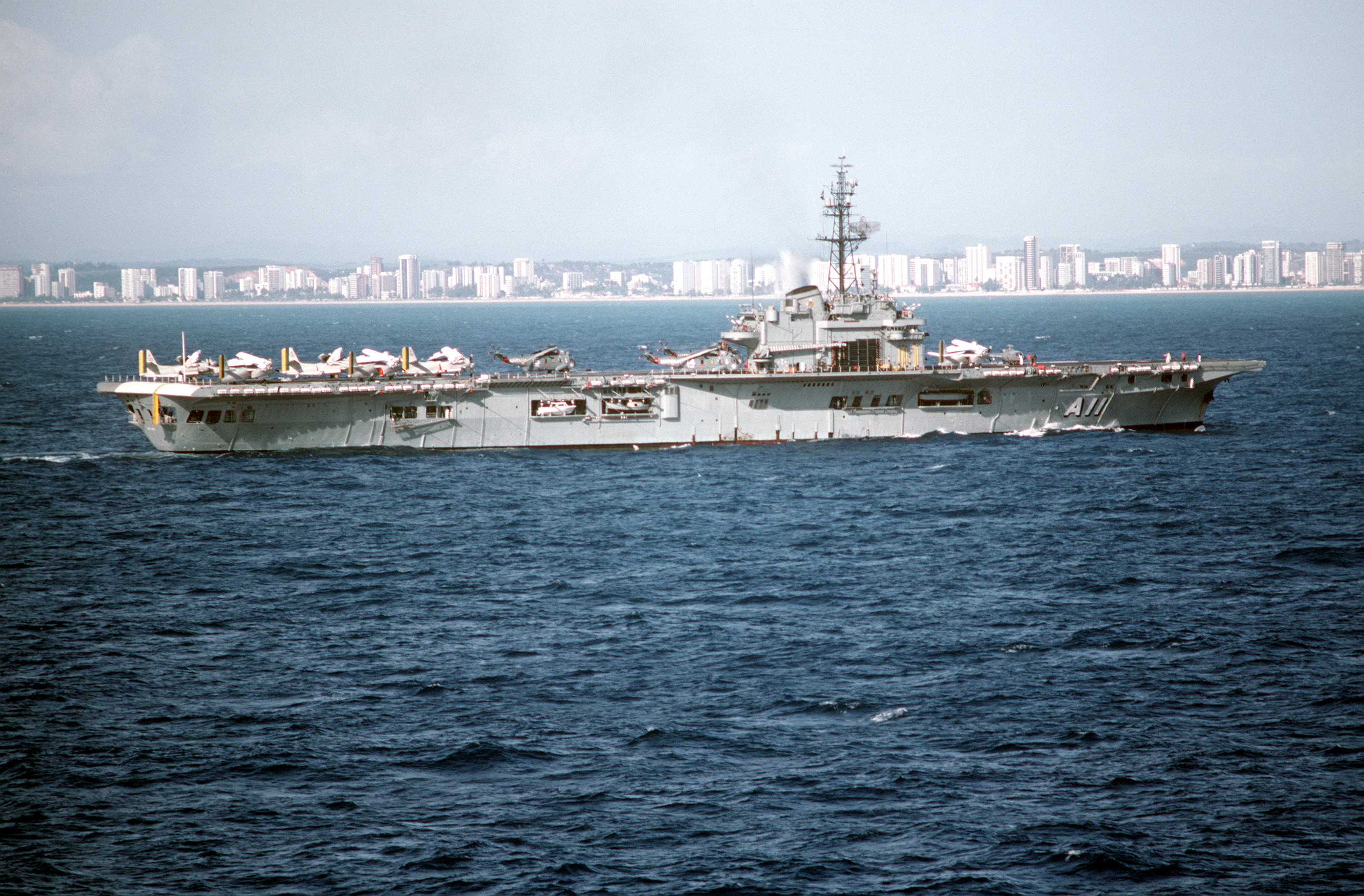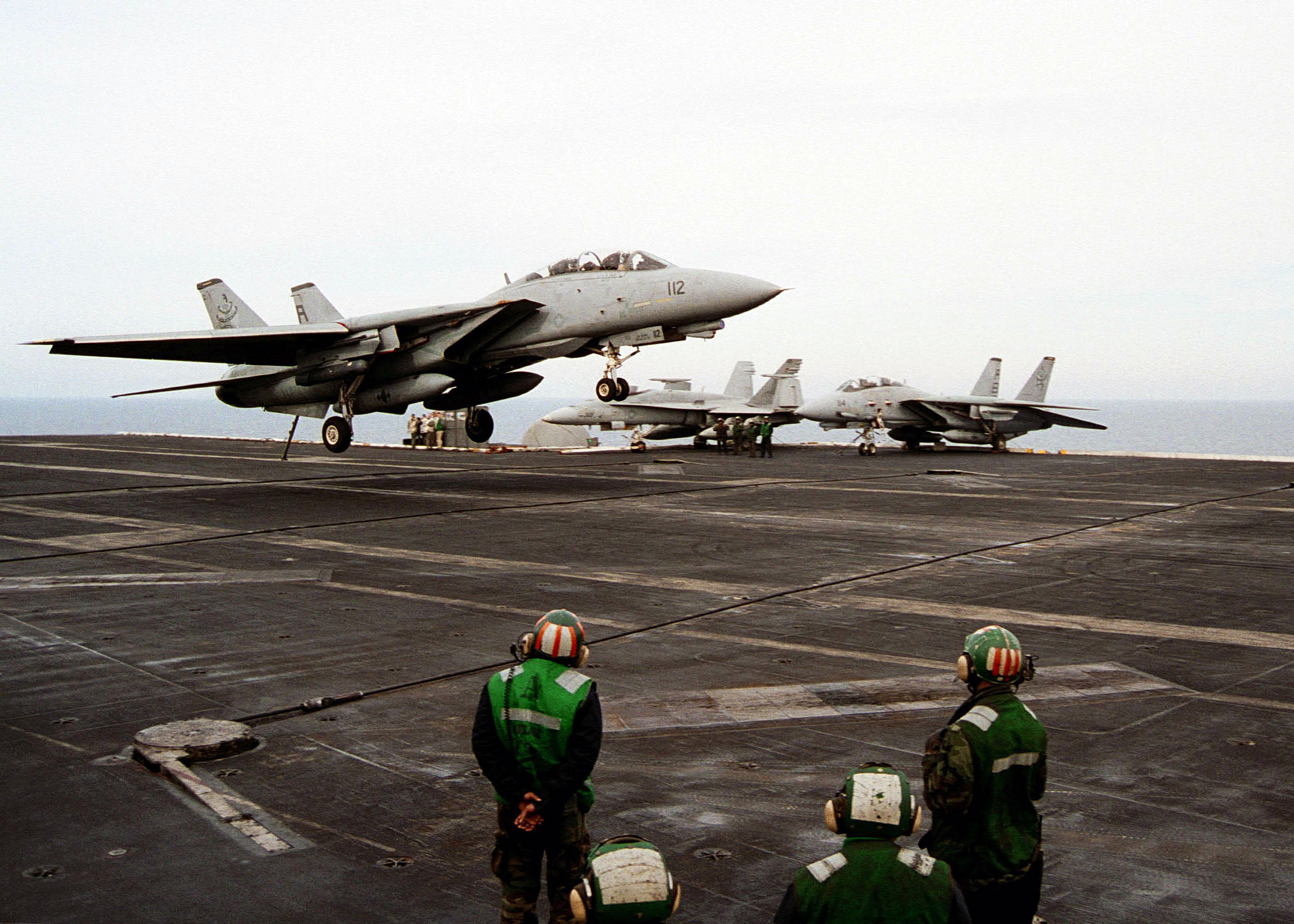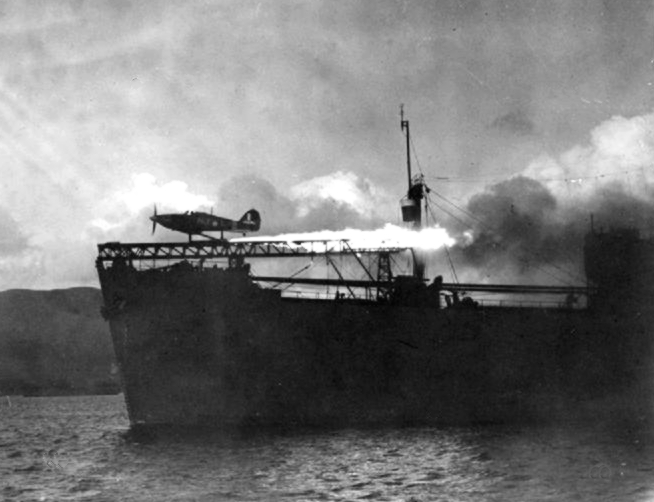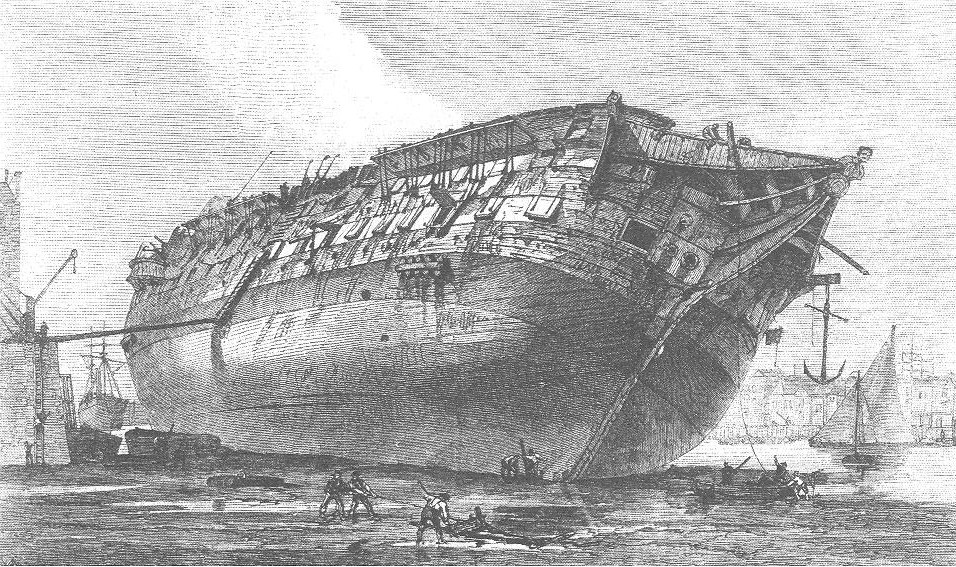|
Brazilian Aircraft Carrier Minas Gerais
NAeL ''Minas Gerais'' (pennant number A 11) was a light aircraft carrier operated by the ''Marinha do Brasil'' (MB, Brazilian Navy) from 1960 until 2001. The ship was laid down for the United Kingdom's Royal Navy during World War II as , was completed shortly before the war's end, and did not see combat. After stints as a training vessel and Arctic research ship, the carrier was loaned to the Royal Australian Navy from 1952 to 1955. She was returned to the British, who sold her to Brazil in 1956. The ship underwent a four-year conversion in the Netherlands to make her capable of operating heavier naval aircraft. She was commissioned into the MB as ''Minas Gerais'' (named after the state of Minas Gerais) in 1960; the first purchased by a Latin American nation, and the second to enter service, behind the Argentinian ARA ''Independencia'' (also ''Colossus''-class). Between 1987 and 1996, the carrier was unable to operate fixed-wing aircraft because of a defective catapult, a ... [...More Info...] [...Related Items...] OR: [Wikipedia] [Google] [Baidu] |
Minas Gerais
Minas Gerais () is one of the 27 federative units of Brazil, being the fourth largest state by area and the second largest in number of inhabitants with a population of 20,539,989 according to the 2022 Brazilian census, 2022 census. Located in the Southeast Region, Brazil, Southeast Region of the country, it is bordered to south and southwest by São Paulo (state), São Paulo; Mato Grosso do Sul to the west; Goiás and the Federal District (Brazil), Federal District to the northwest; Bahia to the north and northeast; Espírito Santo to the east; and Rio de Janeiro (state), Rio de Janeiro to the southeast. The state's capital and largest city, Belo Horizonte, is a major urban and finance center in Brazil, being the List of largest cities in Brazil#Top 115 most populous cities and state capitals, sixth most populous municipality in the country while its Greater Belo Horizonte, metropolitan area ranks as the List of metropolitan areas in Brazil, third largest in Brazil with just ov ... [...More Info...] [...Related Items...] OR: [Wikipedia] [Google] [Baidu] |
1942 Design Light Fleet Carrier
The 1942 Design Light Fleet Carrier, commonly referred to as the British Light Fleet Carrier, was a light aircraft carrier design created by the Royal Navy during the Second World War, and used by eight naval forces between 1944 and 2001. They were designed and constructed by civilian shipyards to serve as an intermediate step between the expensive, full-size fleet aircraft carriers and the less expensive but limited-capability escort carriers. Sixteen Light Fleet carriers were ordered, and all were laid down to the ''Colossus'' class design during 1942 and 1943. However, only eight were completed to this design; of these, four entered service before the end of the war, and none saw front line operations. Two more were fitted with maintenance and repair facilities instead of aircraft catapults and arresting gear, and entered service as aircraft maintenance carriers. The final six were modified during construction to handle larger and faster aircraft, and were re-designated as ... [...More Info...] [...Related Items...] OR: [Wikipedia] [Google] [Baidu] |
Arresting Gear
An arresting gear, or arrestor gear, is a mechanical system used to rapidly decelerate an aircraft as it lands. Arresting gear on aircraft carriers is an essential component of naval aviation, and it is most commonly used on CATOBAR and STOBAR aircraft carriers. Similar systems are also found at land-based airfields for expeditionary or emergency use. Typical systems consist of several steel wire ropes laid across the aircraft landing area, designed to be caught by an aircraft's tailhook. During a normal arrestment, the tailhook engages the wire and the aircraft's kinetic energy is transferred to hydraulic damping systems attached below the carrier deck. There are other related systems that use nets to catch aircraft wings or landing gear. These ''barricade'' and ''barrier'' systems are only used for emergency arrestments for aircraft without operable tailhooks. History Arresting cable systems were invented by Hugh Robinson and were used by Eugene Ely on his first landing ... [...More Info...] [...Related Items...] OR: [Wikipedia] [Google] [Baidu] |
Steam Catapult
An aircraft catapult is a device used to help fixed-wing aircraft gain enough airspeed and lift for takeoff from a limited distance, typically from the deck of a ship. They are usually used on aircraft carrier flight decks as a form of assisted takeoff, but can also be installed on land-based runways, although this is rare. The catapult used on aircraft carriers consists of a track or slot built into the flight deck, below which is a large piston or ''shuttle'' that is attached through the track to the nose gear of the aircraft, or in some cases a wire rope, called a catapult bridle, is attached to the aircraft and the catapult shuttle. Other forms have been used historically, such as mounting a launching cart holding a seaplane on a long girder-built structure mounted on the deck of a warship or merchant ship, but most catapults share a similar sliding track concept. Different means have been used to propel the catapult, such as weight and derrick, gunpowder, flywheel, co ... [...More Info...] [...Related Items...] OR: [Wikipedia] [Google] [Baidu] |
Angled Flight Deck
The flight deck of an aircraft carrier is the surface on which its aircraft take off and land, essentially a miniature airfield at sea. On smaller naval ships which do not have aviation as a primary mission, the landing area for helicopters and other VTOL aircraft is also referred to as the flight deck. The official U.S. Navy term for these vessels is "air-capable ships". Flight decks have been in use upon ships since 1910, the American pilot Eugene Ely being the first individual to take off from a warship. Initially consisting of wooden ramps built over the forecastle of capital ships, a number of battlecruisers, including the British and , the American and , and the Japanese ''Akagi'' and battleship ''Kaga'', were converted to aircraft carriers during the interwar period. The first aircraft carrier to feature a full-length flight deck, akin to the configuration of the modern vessels, was the converted liner which entered service in 1918. The armoured flight deck was a ... [...More Info...] [...Related Items...] OR: [Wikipedia] [Google] [Baidu] |
Damen Verolme Rotterdam
Damen Verolme Rotterdam, is a repair shipyard in Rotterdam, Netherlands. History Foundation The company was founded in 1957 by Cornelis Verolme as Verolme Dok en Scheepsbouw Maatschappij (VDSM). In 1955 Verolme owned Verolme Verenigde Scheepswerven, a collection of two small Dutch shipyards and a small machine factory. Nevertheless, he decided to construct a huge shipyard, capable of meeting the demand for ever larger ships. Meanwhile, the Port of Rotterdam Authority was developing the Botlek industrial and harbor area near Rozenburg. In this empty space close to the sea on the deep Nieuwe Waterweg, Verolme wanted to realize his vision of shipbuilding and repair. Various slipways, drydocks and floating docks were built in the late 1950's, enabling the construction of supertankers and conversions of aircraft carriers. In 1970 a huge 405 x 90 m. drydock (dock nr. 7) was added. RSV (1971-1983) In 1971 the holding Verolme Verenigde Scheepswerven fused with Rijn-Schelde Machine ... [...More Info...] [...Related Items...] OR: [Wikipedia] [Google] [Baidu] |
Juscelino Kubitschek De Oliveira
Juscelino Kubitschek de Oliveira (; 12 September 1902 – 22 August 1976), also known by his initials JK, was a Brazilian politician who served as the 21st president of Brazil from 1956 to 1961. Kubitschek's government plan, dubbed "50 years in 5", was centered on economic and social development. During his term the country experienced a period of notable economic growth and relative political stability. However, there was also a significant increase in external debt, inflation, income concentration and wage erosion. At the time, there was no re-election and, on 31 January 1961, he was succeeded by Jânio Quadros, supported by the UDN. Kubitschek is best known for the construction of Brazil's new capital: Brasília, which was inaugurated on 21 April 1960, replacing Rio de Janeiro. Kubitschek was born in Diamantina, Minas Gerais, in 1902. His father, João César de Oliveira, died when he was only two years old. JK completed the humanities course at the Diamantina Seminary an ... [...More Info...] [...Related Items...] OR: [Wikipedia] [Google] [Baidu] |
Brazilian Presidential Election, 1955
Presidential elections were held in Brazil on 3 October 1955.Dieter Nohlen (2005) ''Elections in the Americas: A data handbook, Volume II'', p173 The result was a victory for Juscelino Kubitschek, who received 35.7% of the vote. Voter turnout was 59.7%.Nohlen, p232 Background After the suicide of Getúlio Vargas, his Vice President João Café Filho took office. Prior to Vargas' death, Brazil was living a time of intense political division, with the right-wing opposition National Democratic Union (UDN), high-level military officers and the mass media openly trying to depose him following the attempted assassination of right-wing journalist Carlos Lacerda, allegedly ordered by Vargas. Juscelino Kubitschek, then Governor of Minas Gerais and a member of the pro-Vargas Social Democratic Party (PSD) announced his candidacy and built an alliance with the popular left-wing populist João Goulart of Vargas' Brazilian Labour Party (PTB), who was Vargas' former Minister of Labour and per ... [...More Info...] [...Related Items...] OR: [Wikipedia] [Google] [Baidu] |
British Pacific Fleet
The British Pacific Fleet (BPF) was a Royal Navy formation that saw action against Japan during the Second World War. It was formed from aircraft carriers, other surface warships, submarines and supply vessels of the RN and British Commonwealth navies in November 1944. After formation in Ceylon, the BPF began with operations against Japanese resources in Sumatra before moving to Australia where it made its headquarters at Sydney with a forward base at Manus Island off Papua New Guinea. The fleet supported the invasion of Okinawa in March 1945 by neutralising the Sakishima Islands. Though subjected to heavy attacks by Japanese aircraft, their well-armoured carriers and modern fighter aircraft gave effective protection. Submarines attached to the fleet sank Japanese shipping, and in July 1945 the fleet joined in the bombardment of the Japanese home islands. By the time Japan surrendered in August 1945, the fleet included four battleships, six fleet carriers, fifteen smaller ... [...More Info...] [...Related Items...] OR: [Wikipedia] [Google] [Baidu] |
Swan Hunter
Swan Hunter, formerly known as Swan, Hunter & Wigham Richardson, is a shipbuilding design, engineering, and management company, based in Wallsend, Tyne and Wear, England. At its apex, the company represented the combined forces of three powerful shipbuilding families: Swan, Hunter and Wigham Richardson. The company was responsible for some of the greatest ships of the early 20th century, most famously which held the Blue Riband for the fastest crossing of the Atlantic, and which rescued survivors from . In 2006 ''Swan Hunter'' ceased vessel construction on Tyneside, but continues to provide design engineering services. History Swan & Hunter was founded by George Burton Hunter, who formed a partnership with the widow of Charles Sheridan Swan (the owner of a Wallsend Shipbuilding business established in 1852 by Charles Mitchell) under the name in 1880. In 1903, C.S. Swan & Hunter merged with Wigham Richardson (founded by John Wigham Richardson as Neptune Works in 186 ... [...More Info...] [...Related Items...] OR: [Wikipedia] [Google] [Baidu] |
Ship Breaking
Ship breaking (also known as ship recycling, ship demolition, ship scrapping, ship dismantling, or ship cracking) is a type of ship disposal involving the breaking up of ships either as a source of Interchangeable parts, parts, which can be sold for re-use, or for the extraction of raw materials, chiefly scrap. Modern ships have a lifespan of 25 to 30 years before corrosion, Fatigue (material), metal fatigue and a lack of parts render them uneconomical to operate. Ship-breaking allows the materials from the ship, especially steel, to be recycled and made into new products. This lowers the demand for mined iron ore and reduces energy use in the steelmaking process. Fixtures and other equipment on board the vessels can also be reused. While ship-breaking is sustainable, there are concerns about its use by poorer countries without stringent environmental legislation. It is also labour-intensive, and considered one of the world's most dangerous industries. In 2012, roughly 1,250 oce ... [...More Info...] [...Related Items...] OR: [Wikipedia] [Google] [Baidu] |









